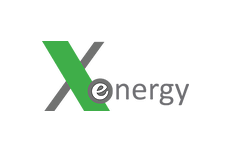Part 1 of 2 Parts
Tech companies are scrambling to find new power sources for AI’s huge energy needs. Some of them are turning to startups that are developing new nuclear technology. Google recently announced that it plans to start using power from Kairos Power’s small modular reactors (SMRs) by 2030. Amazon is investing in X-Energy, which is another nuclear startup. Microsoft hasn’t yet announced a similar investment. However, Microsoft recently agreed to purchase electricity from Helion Energy’s first fusion power plant, scheduled for deployment in 2028.
Nuclear boosters claim that the newest nuclear tech is safer and more sustainable than traditional nuclear power plants. However, some critics argue that next generation “advanced” nuclear technology isn’t necessarily that advanced and that it’s unlikely to be ready on the timeline that Big Tech wants.
Ed Lyman is the director of the nuclear power safety program at the nonprofit Union of Concerned Scientists. He said, “I think it’s highly unlikely that these reactors are going to perform the way that their developers are promising.”
X-Energy is making a small reactor filled with fuel “pebbles”, each around the size of a billiard ball. They contain thousands of tiny particles of uranium that are each surrounded by layers of carbon. This type of fuel is “tristructural isotropic” fuel (TRISO). The Department of Energy (DoE) calls it “the most robust nuclear fuel on Earth,” a claim that Lyman says is “wildly overhyped.”
TRISO fuel continuously rotates through the core of the reactor, along with helium that absorbs the heat. The heat turns water into steam which drives a turbine to make electricity. The X-Energy claims that its design is “meltdown-proof” and says the particles “retain their integrity under all foreseeable conditions.”
Lyman wrote a detailed report about next-gen nuclear reactors in 2021 and closely follows the industry. He argues that it’s too early to say that it’s safe. He explains that “X-Energy’s specific fuel type has not yet been tested under any circumstances.” When TRISO fuel from another manufacturer was tested in a reactor at Idaho National Laboratory, the experiment had to stop early because it was producing high levels of radioactive cesium at certain temperatures. X-Energy also claims that its fuel is so inherently safe that a containment building isn’t necessary, but Lyman disagrees. He says that the reactors could be vulnerable to air or water leaks, and that the TRISO fuel has to be made to exacting specifications that have yet to be proven. He adds that “They’re still kind of basing all their safety analyses on optimistic assumptions.”
X-Energy says their reactors run efficiently, using more than ninety percent of the available uranium in each pebble. However, Lyman says it’s less efficient than traditional nuclear power plants and that it generates more radioactive waste. The spent fuel will be stored on site for the 60-year life of the reactor. After that the DoE will have to store it in a geological repository. So far, these repositories don’t exist, and nuclear waste from decades of older nuclear power plants is still piling up. The U.S. started to build a repository in Arizona at Yucca Mountain, but the project was canceled in 2011.
Kairos also uses TRISO fuel, with their own type of reactor. Lyman argues that there are other problems with the Kairos reactors. He says that the coolant that the company uses is corrosive and it could be difficult to find materials for the reactor that won’t be damaged by it. Kairos responded that it has done thousands of hours of testing with “very little corrosion” under normal operating conditions. Lyman still says that it’s too early in the process to know how the reactor will actually perform. Construction began in July on the company’s demonstration reactor in Oak Ridge, Tennessee.
The full-scale TRISO reactor will also release more tritium, a radioactive isotope of hydrogen, than existing nuclear power plants. Lyman argues the tritium poses a threat to the environment. Kairos says the levels of tritium release “do not pose a significant risk to public health or the environment.” They note that some level of tritium naturally exists in groundwater. They say that they will “conduct regular monitoring and mitigation efforts to limit any tritium releases.”
Please read Part 2 next
Nuclear Reactors 1443 – Major Corporations Are Investing In New Advanced Nuclear Reactors Designs Utilizing TRISO Fuel To Power Data Center – Part 1 of 2 Parts

